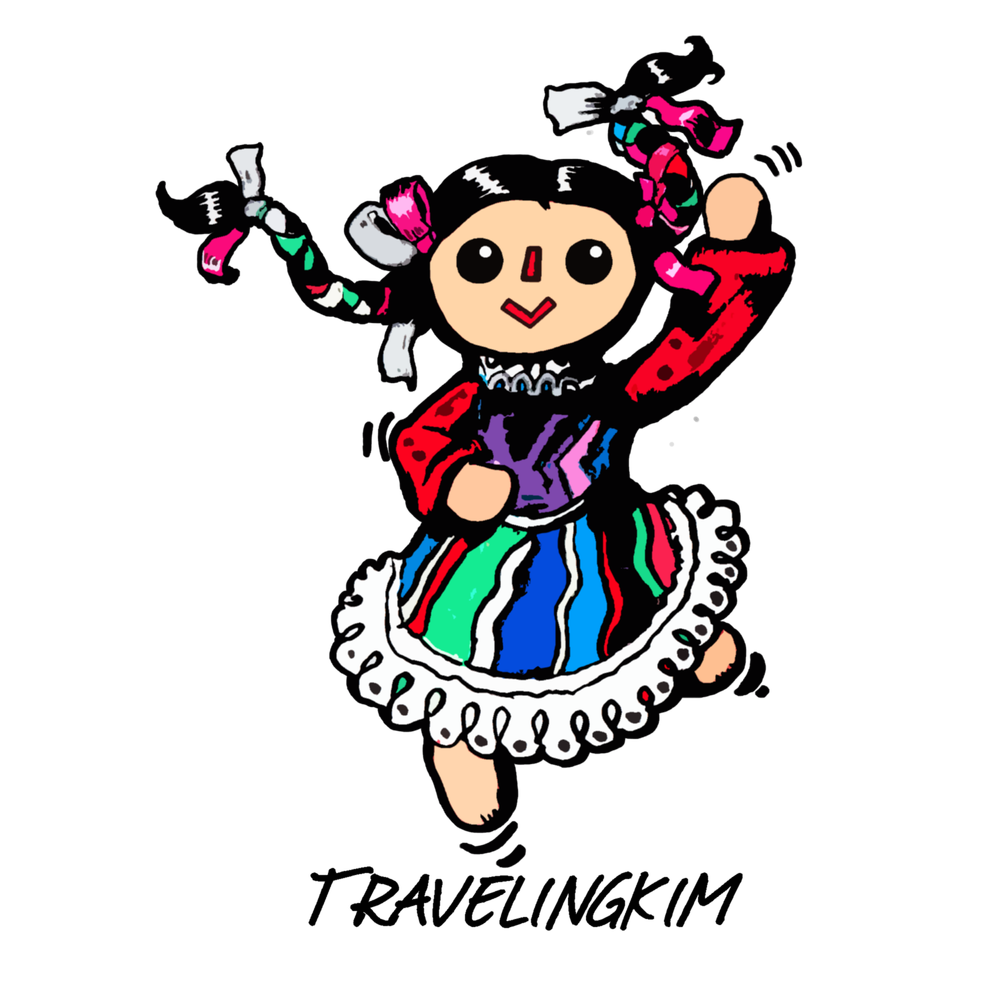A brief description and history of Chicago's Mexican Neighboorhood: Pilsen | TravelingKim
Visiting my friend Manis in Chicago, I was excited to know her new place and I fell in love with her neighborhood: Pilsen. A jewel in this city! This neighborhood has such character and is a magnificent representative of some of the best traditions of Mexican and Latino cultures.
Located on the Lower West Side of Chicago, Pilsen has been historically a point of entry for immigrants, first the Europeans and later on the Latino community. Over in the 1800's the first to settle were the Germans and Irish, but towards the end of that century a big wave of Czech immigrants and other smaller ethnic groups from Eastern Europe accommodated themselves in this area. We owe the name of this neighborhood to the homage made to the city of Plzň (German for Pilsen) in the region of Bohemia, Czech Republic. The Latino community started entering in the 1950's, later on becoming the majority in this neighborhood. What has been the constant, even through these cultural shifts, has been the working-class element of the societies establishing here. Gentrification is the enemy entering all neighborhoods of this class across America, and Pilsen is trying to fight against it and conserve its working-class component, and is currently considered a ‘Sanctuary for Immigrants’ since the local Chicago Police does not collaborate with the immigration customs enforcement.
Because of its history, the landscape of Pilsen has been molded by various cultures, causing a beautiful contrast of European architecture and Latino pop culture street art. Muralism in Pilsen is a big part of how this place tends to express itself, just as in Mexico after the Revolution, it promotes social and political messages, reminding its residents where they come from, their history, and the current battles: deportation, racism, gentrification and violence. This art street expression vastness across the neighborhood wouldn’t have been possible without the help and collaboration of Chicago Urban Art Society, National Museum of Mexican Art and Pawn Works. With the project named “Art in Public Spaces”, Pilsen has been able to convert eyesores into great pieces of art that create homage to Hispanic culture and also craft consciousness.









On 16th Street, along the train tracks, you’ll be able to find a bunch of murals of different topics and plenty of colors and styles from local and international artist, such as Hector Duarte (don't miss his home which is literally a piece of art), ROA and Erik Burke AKA OverUnder. This is part of the neighborhood is very inspirational, and for artist it's a must-visit spot. It can be said that Pilsen is the leading center of muralism in the Midwest, even on the L-Train Pink line station art as been poured into its stairs.
The majority of businesses are located on 18th street and you get a feeling you're in the center of a Mexican city, from bars and restaurants to small food and snack stalls and panaderías (bakeries). I can't congratulate enough Simone's Bar for its amazing craft beer and Azul 18 for its amazing food and that it's a BYOB restaurant!!!
Crowning this place is the National Museum of Mexican Art, with the biggest collection of Mexican art in the U.S. and host to many Mexican tradition events such as Día de los Muertos and Día del Niño.
I was happy to attend with my friends Pilsen's new music festival called RuidoFest which brought artists from all Latin America such as CaféTacvba and Molotov. We were really happy to be singing at the top of our lungs some of our favorite songs in Spanish and be dancing to some really good beats. Other events that take place in the neighborhood are Mole de Mayo, which celebrates the traditional and amazing dish of mole, and Pilsen Open Studios, which is an independent event for people to get a glimpse of what's happening in the art world of the neighborhood.
I cannot brag enough about the beauty of this neighborhood. It made my friends and I discover Chicago in a new light and at least for me create more consciousness about Mexican-American culture. That trip in the the summer of 2015 will forever stay in our hearts, and I would love you to have the same experience.
For tours, I recommend you to visit:
- Walk Chicago Tours: Pilsen Neighborhood
- EveryTrail: A Celebration of Mexican Culture in Pilsen
- Pilsen Bike Tours
